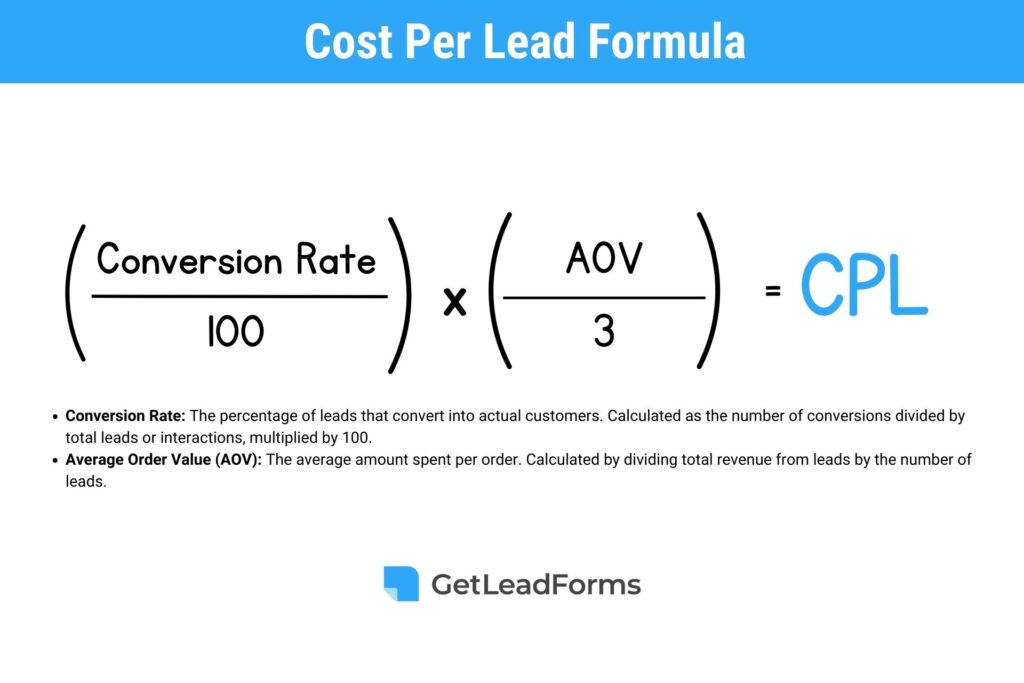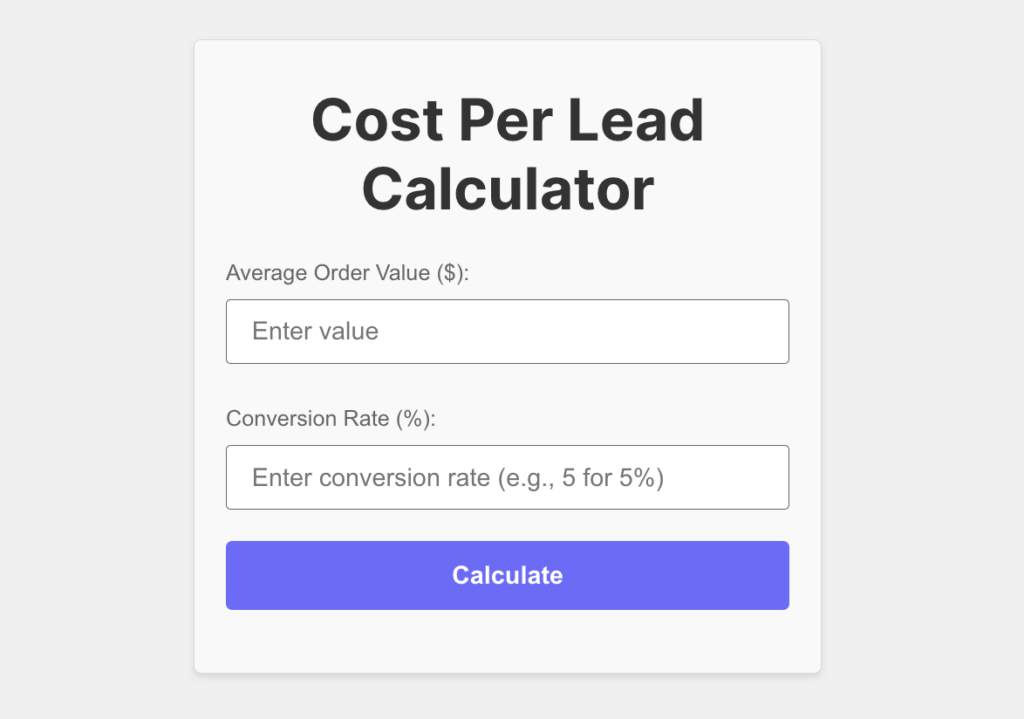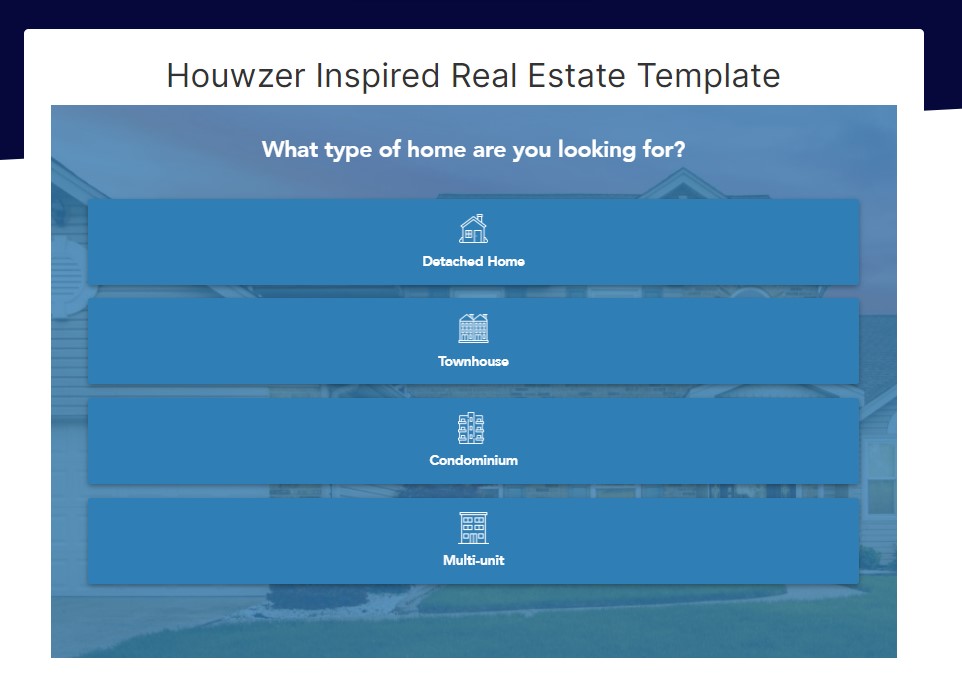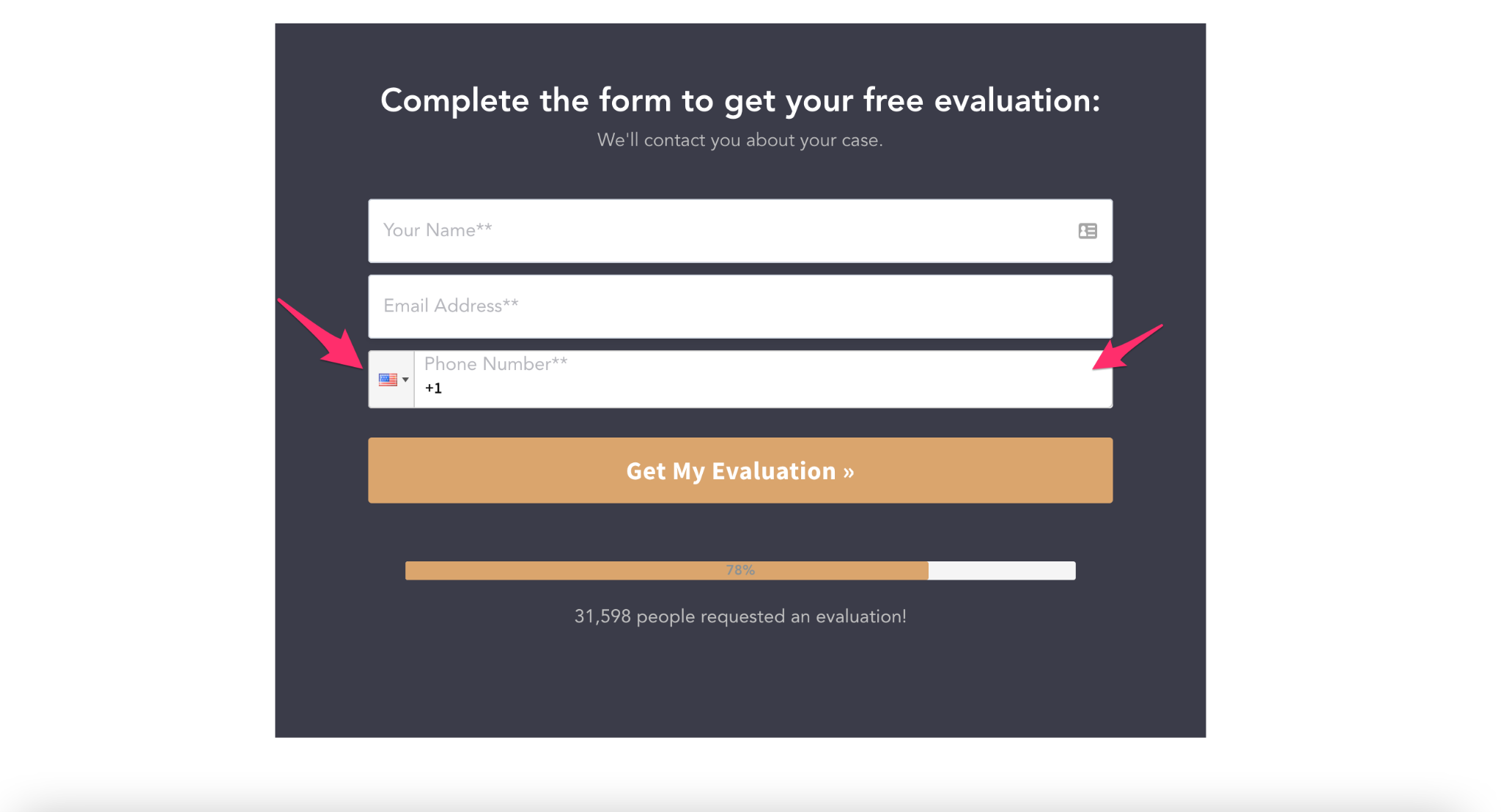One of the biggest challenges in pay-per-lead (PPL) marketing is finding the right price to charge your prospects.
You don’t want to charge too high, as that can scare them away. But underpricing can also devalue the leads you’ve worked hard to generate.
In this post, I’ll help you answer the key question – how much to charge per lead?
Additionally, we’ll show you the average cost per lead in different industries and give some tips to help you boost your lead value.
Are you ready?
Note: GetLeadForms makes it easy to qualify, convert, and route leads from any website or landing page. Grab a free trial here.
How much to charge per lead?
The price you set for each lead must reflect its potential value for your client.
Regardless of how much time and money you pour into generating leads, your efforts may not be fully appreciated or rewarded if they don’t align with your client’s expectations.
Let’s say you’re generating home purchase mortgage leads. The leads you sell should ideally be individuals with the interest and financial capability to purchase a home soon.
This audience might be smaller in number but more valuable. If your methods successfully target and engage this demographic, you can justify charging a premium price for these high-quality, high-converting leads.
However, the scenario changes drastically if the leads you provide are of poor quality. For example, if you broadly target a general audience who are interested in homes but lack the desire to obtain a mortgage within the next 6-12 months, they might hold little immediate value for the lender.
In such a case, even if you generate a high volume of leads, they may not translate into sales. This mismatch can affect how much the client is willing to pay for each lead.
How much do leads cost?
Much like how much you can charge for your leads, the cost of acquiring them can also vary. You have to consider some factors when figuring out the numbers:
Factors that affect lead generation cost
- Accessibility. You can expect the value of a lead to be higher when you need to apply more specialized and costly marketing efforts, like getting high-level executives or a niche market.
- The industry. Getting leads for B2B software, like customer management programs, usually costs more than finding leads for common consumer shops.
- The geographical location. Generating leads in countries with high competition and advertising costs, like the United States, can be more expensive than in countries with less saturated markets.
- The cost of products and services being offered. Selling luxury goods or expensive B2B services often requires a higher investment in lead generation to attract and convince potential customers of the high value.
- The market competition. Lastly, industries with more intense competition often demand more aggressive and innovative marketing strategies. So leads in technology, healthcare, and finance, where many companies vie for market share, can be costlier.
How to calculate cost per lead (with a free calculator)
I can’t give you the exact cost of a lead for your industry since that varies based on the factors discussed above, but I can share a famous formula that many lead generators use – the Cost Per Lead (CPL) equation. It goes like this:
Note:Change image below

- Calculate the Average Order Value (AOV):
- Formula:
AOV = Total Revenue from Leads / Total Number of Leads - Example: If a converted lead typically brings in $3,000, then AOV = $3,000.
- Formula:
- Divide the AOV by 3:
- Formula:
AOV / 3 - Calculation for the example: $3,000 / 3 = $1,000.
- Formula:
- Calculate the Cost Per Lead based on the Conversion Rate:
- Assume a specific conversion rate (e.g., 5%).
- Formula:
(Conversion Rate / 100) * (AOV / 3) - Calculation for the example with a 5% conversion rate:
(5 / 100) * $1,000 = $50.
So, the full formula to calculate the Cost Per Lead (CPL) given the AOV and a conversion rate is:
CPL=(Conversion Rate100)×(AOV3)CPL=(100Conversion Rate)×(3AOV)
In the example with an AOV of $3,000 and a conversion rate of 5%, the CPL would be $50.
P.S. Want a faster way to calculate the cost per lead? Use our interactive calculator. Enter your campaign costs and the number of leads generated, and let our tool do the rest.

How to find out your client’s revenue for better CPL computation
Besides the factors I mentioned above, knowing your client’s revenue is also crucial. It indicates their ability to pay and the expected ROI from your leads.
For instance, a client with a high revenue will likely have more means to invest in marketing and lead generation. They may also be looking for a higher volume or quality of leads and, thus, might be willing to pay more for high-converting ones.
But the thing is, it’s pretty challenging to peak at the exact figures. Some prospects aren’t open to sharing their financial information directly. If that’s the case, try the following:
- Industry Benchmarks. Research average revenues for businesses in your client’s industry. This can give you an estimate to work with.
- Client’s Online Presence and Activities. Analyze their website, marketing campaigns, and online customer engagement. A robust online presence and heavy marketing efforts often correlate with higher revenue.
- Inquire As A Client. Engaging with their sales or customer service team as a potential client can provide insights into their transaction sizes and service scope. These data indirectly indicate their revenue scale.
Average cost per lead by industry
Now, with a better understanding of the factors that influence lead costs, let’s look at how these costs can differ across various industries.
Here’s a detailed table showcasing the average cost per lead by industry:
| Industry | Average Cost Per Lead |
| Home Services | |
| Appliance Repair | $9.99 |
| House Cleaning | $25.00 |
| Home Inspections | $19.90 |
| Automotive | |
| Mobile Car/Auto Detailing | $9.99 |
| Mobile Mechanic | $9.99 |
| Pet Services | |
| Dog Grooming | $9.99 |
| Pet Care Services | $9.99 |
| Health and Wellness | |
| Senior In-Home Health Care | $25.00 |
| Counseling Services | $29.90 |
| Fitness | $13.29 |
| Professional Services | |
| Legal Services/Attorney | $49.00 |
| Notary Services | $9.99 |
| Bookkeeping | $25.00 |
| Property Management | $49.00 |
| Cleaning and Maintenance | |
| Commercial Cleaning (One-time/Recurring) | $29.90/$49.00 |
| Pressure Washing | $19.90 |
| Pool Service | $29.90 |
| Construction and Renovation | |
| General Construction | $49.00 |
| Remodeling | $49.00 |
| Roofing | $49.00 |
| Disaster Restoration Services | |
| Water Damage Restoration | $129.00 |
| Fire Damage Restoration | $129.00 |
| Smoke Damage Restoration | $129.00 |
| Others/General Services | |
| Tutoring | $9.99 |
| DJ Services | $9.99 |
| Dumpster Services | $9.99 |
| HVAC | $29.90 |
| B2B SaaS | |
| Marketing agencies | $99 |
| IT and technical services | $208 |
| Business services | $132 |
How to charge more for your leads
There are several strategies you can use to increase what you can charge. Let me share some of them with you:
Tip #1: Lead Quality
Lead quality is absolutely crucial. It’s all about delivering leads that are primed and ready to engage with your client’s services. We’re talking about leads that are not just interested but are the right fit and have the intent and ability to purchase.
But how can you find high-quality leads?
One effective way is through the use of multi-step forms or quizzes. These tools allow you to gather more detailed information about each lead. Moreover, it’s also a great indicator of interest.
When leads take the time to answer several questions, they’re showing a commitment that single-step leads often don’t. This is the kind of lead that can justify a higher price point when you’re setting your rates.
Here’s an example of a responsive multi-step form:

With this template, you can ask questions like the type of property a lead is interested in, their budget, and their timeline for purchasing. It’s useful for lead generators for real estate, but it’s also customizable.
Meanwhile, quizzes can be beneficial in industries with diverse and specific customer preferences and needs.
For instance, to encourage better sign-ups to your free consultation, you can create a fun quiz for your prospects, asking them about their goals, dietary preferences, and whether they’re interested in training classes.
Just look at this one from our pre-made templates in GetLeadForms.

Note: Do you want to create fun quizzes and multi-step forms like the ones above? We have a lot to offer. Our forms also contain notifications, analytics, integration, and more features to help you qualify and route leads! Sign up here and get a free trial.
Tip #2: Choose the right industry
Certain industries inherently have higher lead costs, primarily due to the high value of their final sales or the market’s competitive nature.
For example, industries like legal services, financial planning, and home renovation typically see higher costs per lead.
By strategically choosing industries with higher average lead costs, you can align your lead generation efforts with sectors with a higher willingness and a need to pay more for quality leads.
If you need help choosing the right industry to go for, go back to the table above and see which ones have a high average cost per lead.
Tip #3: Focus on clients with high-margin products.
High-margin products are items or services that make much more money than they cost to produce.
Prospects that sell these products have more to spend on marketing and getting new customers. They understand that each lead you provide could turn into a high-profit sale for them, so they’re often ready to pay more for your lead generation services.
This creates a win-win situation – you get to charge more for your valuable leads, and they potentially get high-spending customers.
Common examples of industries with high-margin products include goods, accessories, and B2B solutions.
Tip #4: Method of lead generation
Since we’re talking about PPL marketing, your lead generation pricing model is critical in how much you can charge.
Different methods have varying costs and effectiveness, so applying the right one can greatly improve your profit.
Here are some common ones:
- Cost Per Lead (CPL). You charge a specific amount for each lead you deliver, no matter the result. It’s a clear-cut approach, but you must ensure your leads are of good quality to warrant the price.
- Cost Per Appointment (CPA). This method is about charging for each appointment you set up. It’s often more valuable because an appointment suggests the lead is seriously interested.
- Cost Per Call. Similar to CPA. But you charge based on the number of calls you make to potential leads. It’s handy in fields where a phone conversation is vital to making a sale.
- Cost Per Email. You charge for each email lead you generate. This is a common approach in digital marketing.
- Bulk-Pricing. It involves selling many leads at a lower price per lead. It’s great for clients who need lots of leads but can reduce the value of each lead.
- Retainer. You charge a regular, ongoing fee for a steady flow of leads. This method provides a stable income but means you must consistently deliver high-quality leads to keep your clients happy.
Each of these methods has its way of associating costs with the leads you generate, and the best choice often depends on your specific market and your clients’ needs.
Tip #5: Provide verified leads
Verified leads are those that have been confirmed as genuine and interested potential customers.
Offering them to your clients is a huge plus, as it can significantly increase their trust in the quality of your service.
The verification process often includes confirming contact information, such as phone numbers or email addresses, and ensuring the lead is authentic, reachable, and interested in the product or service.
However, before you deliver these leads, you must check their legitimacy. This is where sending a one-time password (OTP) can be incredibly effective. You add an extra layer of confirmation by requiring a lead to verify their contact details via an OTP.
Our forms in GetLeadForms allow you to integrate this OTP verification process seamlessly.

For a full rundown showing how to implement OTP phone verification in your lead generation strategy, visit our guide: How to Verify Leads with GetLeadForms.
Final thoughts on determining your lead generation pricing
As a lead generator, you can decide how much to charge for your leads. Still, this power comes with the responsibility of understanding the market, your clients, and the value of your service.
If you’re still unsure about the right price to set, feel free to use our CPL calculator. It’s designed to give you a snapshot of your campaign’s efficiency, helping you find that sweet spot in pricing your leads.
Ready to fine-tune your lead pricing? Try our CPL Calculator now!
You can explore these valuable resources for further insights:
- Learn about the must-have lead qualification tools to create more effective marketing campaigns from this post.
- Do you want to know the best lead-generation templates you can use for your website? Check out our proven templates.

